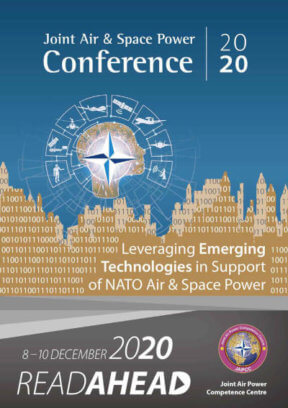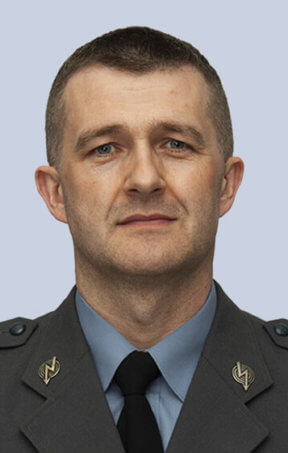‘We have to put aside the comfortable ways of thinking and planning, take risks and try new things so that we can prepare our forces to deter and defeat adversaries that have not yet emerged to challenge us.’1
Donald Rumsfeld, US Secretary of Defense, Feb 2002
Introduction
According to Alliance Joint Doctrine, which describes how operations should be conducted, ‘Battlespace Management (BM) is necessary adaptive means, measures and procedures that enable the dynamic synchronization of activities in the modern battlespace’.2 Traditionally, the battlespace was seen as a geographically defined area with clear boundaries that designated the ‘Area of Operations’ (AOO). In modern warfare, with Space, Cyberspace, EMS and the information domain included, the battlespace will extend well beyond these traditional boundaries. However, the fundamental functions and objectives of BM are unchanged. BM is a process that facilitates and seeks to maximize operational effectiveness, minimize constraints, and contributes to reducing the risk of fratricide. It should coordinate and synchronize activities of all force elements, including non-NATO actors, which makes the task more difficult. Also, BM should produce a high level of Situational Awareness (SA)3 by mitigating friction caused by the existence of boundaries and seams between all force elements.
NATO’s Focus
Due to constantly changing BM conditions and new requirements, NATO should focus more attention on a change of mindset and a different approach to future modern warfare. The Alliance needs to embrace and employ new emerging technologies and processes to exploit/gain additional advantages through information sharing. Figuring out how to stay a step ahead and be ready for any adversary’s unexpected activity in a modern congested and ever-growing battlespace is critically important. Particularly when information flow needs to be managed in real-time to allow commanders to make the most appropriate decisions to achieve coalition goals. NATO needs to change its thinking from the orthodox to the decidedly unorthodox.
There is also a strong need to become more agile. Decision-making processes will increase in tempo and necessitate real-time decisions. All entities involved in a conflict need to use emerging technologies to support BM in order to make it as effective as possible.
The Joint All-Domain Fight
For the foreseeable future operations will most likely employ more than one force element and take place in more than one operational domain (land, sea, air, space, and cyberspace). At the same time, while remaining invisible to the naked eye, the whole range of the Electromagnetic Spectrum (EMS) needs to be constantly explored and monitored to detect adversary activity to allow swift and timely reactions, in some cases even preemptive actions. Additionally, more than two nations will more than likely be involved in any future conflicts, which is especially true for collective NATO defence which brings with it several important aspects that need to be carefully examined. What is more, the battlespace will not be exclusive to only military actors and activities. Recent conflicts and current trends have shown that adversaries will use high-end equipment to create havoc anywhere which can be favourable for achieving their goals.
The question then becomes how to react in this type of situation, how do we maintain positive control of the situation? Command & Control (C2) processes need to be reviewed and adopted to confront the new reality and meet new challenges. Due to the high density of information flow, different players, and multiple environments, effective BM is essential. Proper BM provides to all allied forces synchronized Situation Awareness (SA) which is critical, and required, to avoid any mistakes which can have a negative impact on allied forces. But how to manage the excessive amount of information in a manner accessible for all allied users? The answer may lay in Artificial Intelligence (AI), which can significantly support human interactions, without the need to limit their leading role.
New Approaches
How then to use the capability of a machine to imitate intelligent human behaviour? It is commonly known that there is a big difference between theory and practice. Instead of meeting standardization requirements, there will inevitably be a situation when during an operation some forces will use outdated equipment, which has not been upgraded to meet NATO standards. But it might be not enough to merely meet agreed-upon BM requirements, as the amount of data needed to be received and processed is ever increasing. This situation forces all BM elements to think about new approaches to the data management and force users to implement emerging technologies to support commanders’ processes, as well as seek ways gain the ability to exploit AI for C2.
Additional Articles
This section presents five related articles which will introduce various ideas and issues related to the Battlespace Management, and the different challenges NATO faces therein. The ideas expressed in this article are meant to prepare those attending the 2020 Joint Air & Space Power Conference for the panel discussion on Battlespace Management:
- Lt Col Asger Pilgaard’s (DNK Air Force) article, Exploiting AI in Command and Control of the Air Battlespace, refers to a current study that intends to exploit AI in the Air Command and Control planning cycle (AirC2) in a Joint Force Air Component (JFAC). A decisive deliverable of the study will be a demonstrator linked to an ‘AI agent’4 that can create options to assist air planners and diminish their workload as well as recommend options for the JFAC Commander. Implications, opportunities and risks associated with AI will require continued ethical and judicial discussions.
- Artificial Intelligence promises to enhance speed and accuracy of military decision-making, i.e. in particular shortening the operational C2-cycle. Mr Daniele Frisoni therefore analyses the Potential Impact of AI on Command and Control Systems5. He shows how AI relates to Machine Learning (ML) and Deep Learning (DL), underlines that the use of new technologies like AI require a cost-benefit analysis of all relevant aspects, makes us aware that a learning systems can be only as good as the data it learns from and emphasizes the importance of verification and validation for AI-based algorithms. The main part of his article provides an overview of some C2 functions that may particularly profit from AI technologies and identifies track classification as currently one of the most promising areas of application which is further explained and analysed. Machine Learning classifiers will not yet replace the legacy classifier bit operate in parallel. In mission critical applications, the human operator will not be removed from the decision loop.
- Ms Gentry Lane, in Harnessing AI and Deep Learning6, makes us aware how our Informational Technology (IT) and Operational Technology (OT) networks are attacked with ‘fileless malware’ or through ‘data integrity attacks’ and what we can do to quickly detect them. Moreover, she (‘explores’ or ‘advocates’) an approach that shifts the ‘tactical advantage to the defender’. Analysis supported by Artificial Intelligence and Machine Learning should enable discovery of ‘fileless malware’ and ‘low-observable characteristic’ attacks in near real time. A comprehensive analysis of all IT and OT systems across all branches, i.e. a ‘big-picture analysis’ will provide a clearer view of breach behaviour over time and enable accurate predictions. An essential requirement to support this approach will be a sharing of both real time and predictive data over secure channels because the privacy of forensics and anomaly detection is crucial for military operations.
- From Christophe Fontaine’s article, New Medium Altitude Long Endurance (MALE) capabilities including AI will power NATO’s cross-domain Joint ISR7, we see predictions that AI will play an important role. It argues these new technologies have moved beyond the drawing board. The first generation of Remotely Piloted Aircraft (RAP) MQ-9A ‘Reaper’ is an example that flight duration is not a limitation now like it is for currently still used AWACS system fleet, where crew working time limitations impose significant limitations on mission lengths. It looks like the new RPA will be able monitor (occupy) airspace by staying on station more than 40 hours to provide information from over a target area. Beyond the horizon transmission will no longer be a problem thanks to satellite links and laser transmission availability. C2 systems will be supported relevant to operational information without any interruption or security degradation.
- The final article, Building the Command and Control of the Future from the Bottom Up by Col Paul Birch, Maj Brad DeWees, and Capt Ray Reeves (US Air Force), comes with permission from War on the Rocks. In this article the author presents the case for developing a vision for future decision-making with a bottom-up approach. The paper discusses specific advantages to be gained from this approach style, related to decision speed, integration, problem-solving, as well as resiliency and survivability.
Technology is very much at the forefront of BM development and the implications of emerging technology for BM vary from one functional area to another. Information Management (IM) was and still is a key enabler for SA and depends on the effective use of IT. Of course, technology can never replace the human element but it can significantly support humans and be as useful as necessary to meet future requirements. The cognitive ability to operate effectively within a rapidly changing battlespace can be developed and reinforced first through training and then with experience gathered during upcoming operations to allow NATO to face new BM challenges. That is why constant training is required for those who will play a significant role in decision-making process.












